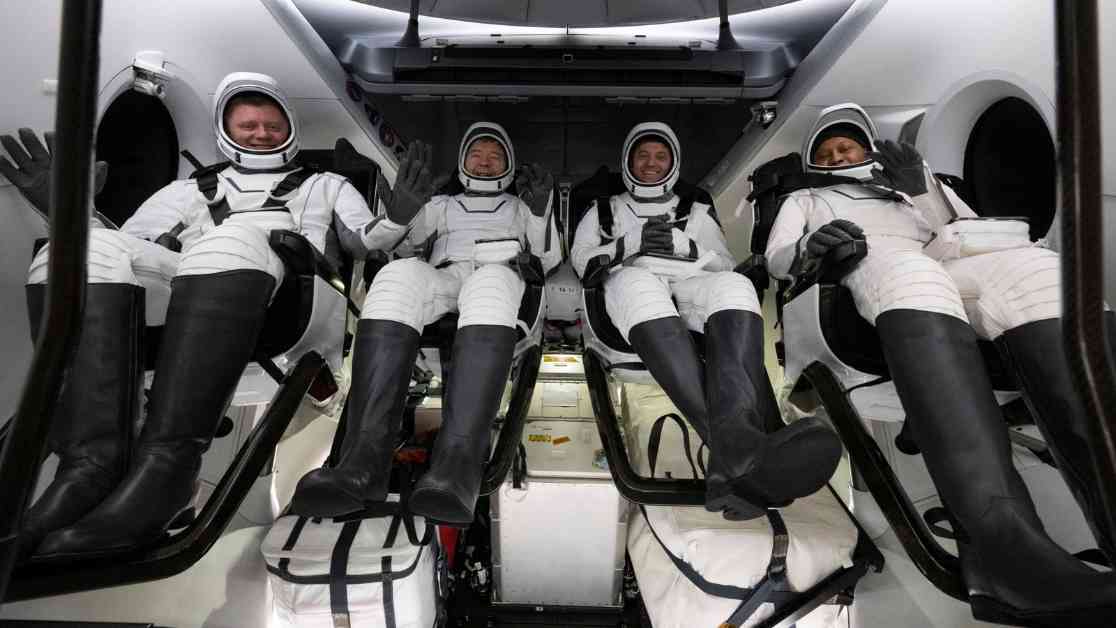An astronaut was hospitalized after coming back to Earth from a long mission on the International Space Station. The astronaut’s name was not disclosed by NASA to respect privacy. The reason for the hospitalization was an undisclosed medical issue. The astronaut is currently in stable condition under observation as a precautionary measure at Ascension Sacred Heart Pensacola hospital. The other three crew members have been released from the hospital and have returned to Houston.
The crew, consisting of astronauts Matthew Dominick, Michael Barratt, and Jeanette Epps, along with Russian cosmonaut Alexander Grebenkin, landed in a SpaceX Dragon spacecraft in the Gulf of Mexico. NASA did not provide details about the medical condition that led to the precautionary measures taken. The space agency has not disclosed information about the crew’s condition or the reason for the abundance of caution.
Russia’s space agency has not commented on Alexander Grebenkin’s condition. SpaceX, which has a fleet of reusable spacecraft, is currently the only option for NASA trips to and from the space station. The company has flown to the ISS 44 times. Boeing’s Starliner, intended as an additional option for NASA, has faced development challenges.
The Crew-8 astronauts’ mission aboard the ISS lasted 235 days, longer than typical six-month missions. This was also the longest mission for SpaceX’s Crew Dragon spacecraft since its launch in 2020. Despite delays caused by various factors, the Crew Dragon spacecraft safely returned to Earth with the crew deploying parachutes before landing in the Gulf of Mexico.
During a news briefing after the splashdown, a NASA official mentioned that the crew is in good health and did not report any issues with the astronauts. However, there were two minor problems with the Crew Dragon’s parachute deployment. Richard Jones, deputy manager of NASA’s Commercial Crew Programme, explained that the initial set of braking parachutes had some debris strikes, and one of the parachutes in the subsequent set took longer than expected to unfurl. These events did not pose a safety risk to the crew, and the splashdown weather was described as ideal for the crew’s recovery.










